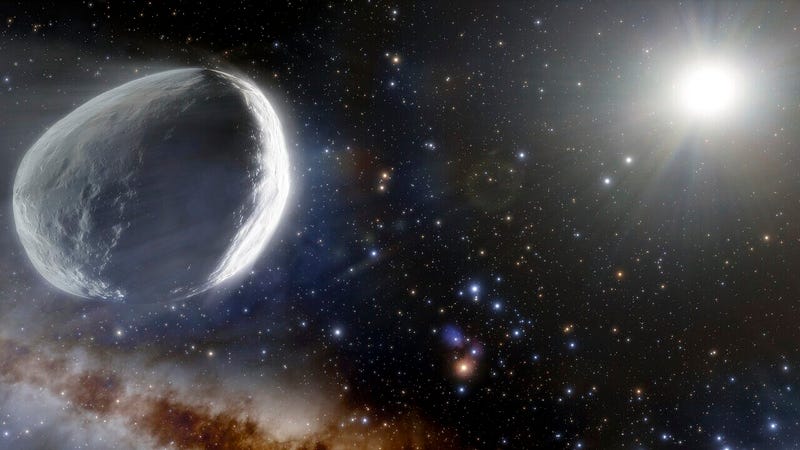Discoveries of the Enormous Comet Bernardinelli-Bernstein
Written on
Chapter 1: Introduction to Comet Bernardinelli-Bernstein
Recent analyses conducted by astronomers utilizing NASA's TESS spacecraft have unveiled that the massive Comet Bernardinelli-Bernstein is already exhibiting signs of activity, characterized by a distinct coma.

This illustration depicts Comet Bernardinelli-Bernstein (BB) in the outer reaches of the Solar System. It is estimated to possess a mass approximately 1,000 times greater than that of an average comet. As the largest comet identified in contemporary times, it is also one of the most distant comets known to have a coma, indicating that the ice within it is vaporizing, thereby creating a cloud of dust and gas around its core. CREDIT: NOIRLab/NSF/AURA/J. da Silva/Spaceengine
Chapter 2: The Unfolding Mystery
Since its discovery in June during the Dark Energy Survey, which focuses on the Southern Hemisphere's sky, scientists have been striving to comprehend the implications of this enormous comet. While typical comets measure around one kilometer in diameter, this particular comet spans an estimated 100 kilometers, establishing it as the largest comet ever found. Currently, Comet BB is situated beyond Uranus's orbit but is projected to venture close to Saturn's orbit before heading back toward the Kuiper Belt. Fortunately, it poses no threat to Earth or even Saturn, yet its impressive size has captured the attention of planetary scientists.
The first video titled "Spacecraft Discovers Thousands of Doomed Comets - Science at NASA" explores the findings of spacecraft that have detected numerous comets, some of which are on collision courses with the Sun.
Section 2.1: Understanding Comets
In previous discussions, we have clarified the distinctions between asteroids and comets. While both are essentially rocky bodies, comets are classified as active when the ices within them begin to vaporize as they approach the warmth of the Sun. These ices can include water, carbon dioxide, carbon monoxide, and others, each vaporizing at varying temperatures. Given the significant distance of Comet BB, astronomers, led by Tony Farnham, questioned whether it might already be exhibiting signs of activity.
Section 2.2: The Search for Evidence
The resolution of images from the Dark Energy Survey was insufficient to definitively ascertain if Comet BB was undergoing sublimation. Consequently, the research team turned to data from NASA's TESS spacecraft. After stacking the images and verifying their accuracy, they confirmed that Comet BB is enveloped in a hazy glow, indicative of sublimating ice. Given its distance, it is likely that the ice sublimating is carbon monoxide. These findings were documented in The Planetary Science Journal.
The second video, "Tonight Watch Bright Comet 12P/Pons-Brooks (2024) In Northern Hemisphere," provides guidance on observing the bright comet visible in the night sky.
More Information
- University of Maryland press release
- “Early Activity in Comet C/2014 UN271 Bernardinelli–Bernstein as Observed by TESS,” Tony L. Farnham, Michael S. P. Kelley, and James M. Bauer, 29 November 2021, The Planetary Science Journal
This narrative was crafted for the Daily Space podcast/YouTube series. For further updates from Dr. Pamela Gay, Erik Madaus, and myself, please visit DailySpace.org.